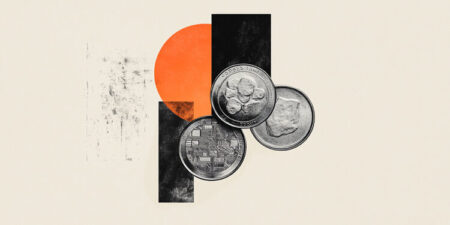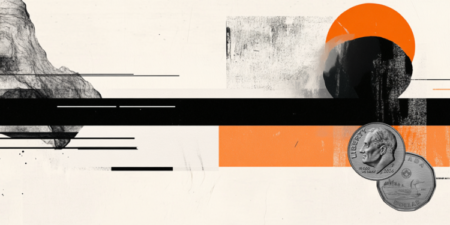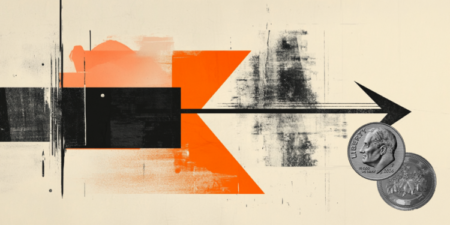- The Australian Dollar could face challenges as Trump announces plans to impose a 25% tariff on all steel and aluminum imports.
- The AUD faced challenges as China’s retaliatory tariffs on certain US exports have come into effect.
- The US Dollar received support as January’s job report reinforced the cautious mood surrounding the Fed’s policy outlook.
The Australian Dollar (AUD) expereinces an upward technical correction against the US Dollar (USD) for the third consecutive day on Monday. However, the AUD/USD pair faced downward momentum after US President Donald Trump, speaking aboard Air Force One, announced plans to impose a 25% tariff on all steel and aluminum imports without specifying the affected countries.
President Trump also stated that additional reciprocal tariffs would be unveiled by midweek, set to take effect almost immediately, matching the tariff rates imposed by each country, according to Reuters.
In response to Trump’s announcement of new tariff plans, Australian Trade Minister Don Farrell emphasized on Monday that “Australian steel and aluminum support thousands of well-paying American jobs and are vital to our shared defense interests.” Farrell is seeking a tariff exemption similar to the one Australia secured during Trump’s presidency in 2018.
The Australian Dollar also weakened amid growing concerns over the US-China trade war, given Australia’s close economic ties with China. A new US levy on Chinese imports took effect last week, while China’s retaliatory tariffs on certain US exports began this Monday.
Last week, Trump and Chinese President Xi Jinping had been expected to negotiate a resolution after reports surfaced about a potential phone call between the two leaders. However, that call was reportedly canceled, though hopes remain that it may still take place.
Traders are increasingly confident that the Reserve Bank of Australia (RBA) will cut its 4.35% cash rate at its upcoming meeting later in February, with market expectations suggesting a 95% probability of a reduction to 4.10%. This follows data indicating that underlying inflation has moderated faster than the RBA had anticipated, prompting several major Australian banks to move their forecast for the first rate cut from May to February.
Australian Dollar remains under pressure as US Dollar advances amid a cautious Fed
- The US Dollar Index (DXY), which measures the US Dollar’s value against six major currencies, rises above 108.00 at the time of writing. The Greenback receives support as the US Federal Reserve (Fed) is now expected to keep interest rates steady this year, following January’s jobs report released on Friday, which indicated slowing job growth but a lower Unemployment Rate.
- US Nonfarm Payrolls (NFP) increased by 143,000 in January, significantly below December’s revised figure of 307,000 and the market expectation of 170,000. However, the Unemployment Rate declined slightly to 4% in January from 4.1% in December.
- US Initial Jobless Claims rose to 219K for the week ending January 31, as reported by the US Department of Labor (DOL) on Thursday. This print surpasses initial estimates of 213K and was higher than the previous week’s revised tally of 208K (from 207K).
- Federal Reserve (Fed) Bank of Chicago President Austan Goolsbee mentioned on Friday that inconsistent policy approaches from the US government cause a high level of economic uncertainty that makes it difficult for the Fed to draw a bead on where the economy, and inflation specifically, are likely heading.
- Meanwhile, Fed Board of Governors member Adriana Kugler noted that US growth and economic activity remain healthy overall, but noted that progress toward the Fed’s inflation goals has been somewhat lopsided, per Reuters.
- In an interview with CNBC, Minneapolis Fed President Neel Kashkari said that he would move towards supporting further rate cuts if they see good inflation data and the labor market stays strong
- China’s Consumer Price Index (CPI) grew at an annual rate of 0.5% in January, up from 0.1% in December and exceeding the market forecast of 0.4%. On a monthly basis, CPI inflation rose 0.7% in January, compared to December’s flat reading of 0%, though it fell short of the expected 0.8% increase.
- China’s Producer Price Index (PPI) declined 2.3% year-over-year in January, matching December’s drop but coming in weaker than the market consensus of a 2.1% decrease.
Technical Analysis: Australian Dollar tests 14-day EMA near 0.6250
The AUD/USD pair hovers near 0.6250 on Monday, testing the 14-day Exponential Moving Average (EMA) on the daily chart. A break below this level could weaken short-term price momentum. The 14-day Relative Strength Index (RSI) is also near the 50 mark, with further movement likely to determine a clearer directional trend.
The AUD/USD pair is testing immediate support at the 14-day EMA of 0.6253. A decisive break below this level could shift the bias bearish, potentially pushing the pair toward 0.6087—the lowest level since April 2020, recorded on February 3.
On the upside, the AUD/USD pair may explore the region around the eight-week high of 0.6330, last reached on January 24.
AUD/USD: Daily Chart
Australian Dollar PRICE Today
The table below shows the percentage change of Australian Dollar (AUD) against listed major currencies today. Australian Dollar was the strongest against the Japanese Yen.
| USD | EUR | GBP | JPY | CAD | AUD | NZD | CHF | |
|---|---|---|---|---|---|---|---|---|
| USD | 0.05% | -0.11% | 0.41% | 0.32% | -0.07% | 0.01% | 0.18% | |
| EUR | -0.05% | -0.10% | 0.47% | 0.38% | -0.13% | 0.04% | 0.20% | |
| GBP | 0.11% | 0.10% | 0.41% | 0.45% | -0.03% | 0.14% | 0.30% | |
| JPY | -0.41% | -0.47% | -0.41% | -0.12% | -0.41% | -0.40% | -0.22% | |
| CAD | -0.32% | -0.38% | -0.45% | 0.12% | -0.36% | -0.34% | -0.18% | |
| AUD | 0.07% | 0.13% | 0.03% | 0.41% | 0.36% | 0.17% | 0.33% | |
| NZD | -0.01% | -0.04% | -0.14% | 0.40% | 0.34% | -0.17% | 0.16% | |
| CHF | -0.18% | -0.20% | -0.30% | 0.22% | 0.18% | -0.33% | -0.16% |
The heat map shows percentage changes of major currencies against each other. The base currency is picked from the left column, while the quote currency is picked from the top row. For example, if you pick the Australian Dollar from the left column and move along the horizontal line to the US Dollar, the percentage change displayed in the box will represent AUD (base)/USD (quote)
Australian Dollar FAQs
One of the most significant factors for the Australian Dollar (AUD) is the level of interest rates set by the Reserve Bank of Australia (RBA). Because Australia is a resource-rich country another key driver is the price of its biggest export, Iron Ore. The health of the Chinese economy, its largest trading partner, is a factor, as well as inflation in Australia, its growth rate and Trade Balance. Market sentiment – whether investors are taking on more risky assets (risk-on) or seeking safe-havens (risk-off) – is also a factor, with risk-on positive for AUD.
The Reserve Bank of Australia (RBA) influences the Australian Dollar (AUD) by setting the level of interest rates that Australian banks can lend to each other. This influences the level of interest rates in the economy as a whole. The main goal of the RBA is to maintain a stable inflation rate of 2-3% by adjusting interest rates up or down. Relatively high interest rates compared to other major central banks support the AUD, and the opposite for relatively low. The RBA can also use quantitative easing and tightening to influence credit conditions, with the former AUD-negative and the latter AUD-positive.
China is Australia’s largest trading partner so the health of the Chinese economy is a major influence on the value of the Australian Dollar (AUD). When the Chinese economy is doing well it purchases more raw materials, goods and services from Australia, lifting demand for the AUD, and pushing up its value. The opposite is the case when the Chinese economy is not growing as fast as expected. Positive or negative surprises in Chinese growth data, therefore, often have a direct impact on the Australian Dollar and its pairs.
Iron Ore is Australia’s largest export, accounting for $118 billion a year according to data from 2021, with China as its primary destination. The price of Iron Ore, therefore, can be a driver of the Australian Dollar. Generally, if the price of Iron Ore rises, AUD also goes up, as aggregate demand for the currency increases. The opposite is the case if the price of Iron Ore falls. Higher Iron Ore prices also tend to result in a greater likelihood of a positive Trade Balance for Australia, which is also positive of the AUD.
The Trade Balance, which is the difference between what a country earns from its exports versus what it pays for its imports, is another factor that can influence the value of the Australian Dollar. If Australia produces highly sought after exports, then its currency will gain in value purely from the surplus demand created from foreign buyers seeking to purchase its exports versus what it spends to purchase imports. Therefore, a positive net Trade Balance strengthens the AUD, with the opposite effect if the Trade Balance is negative.
Read the full article here
















